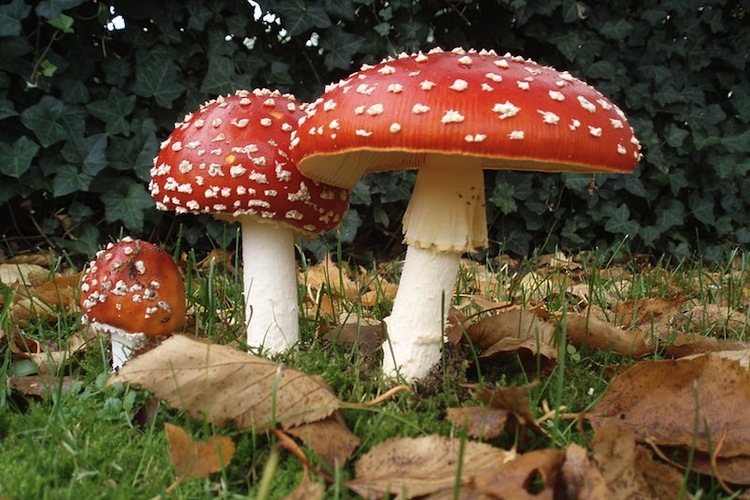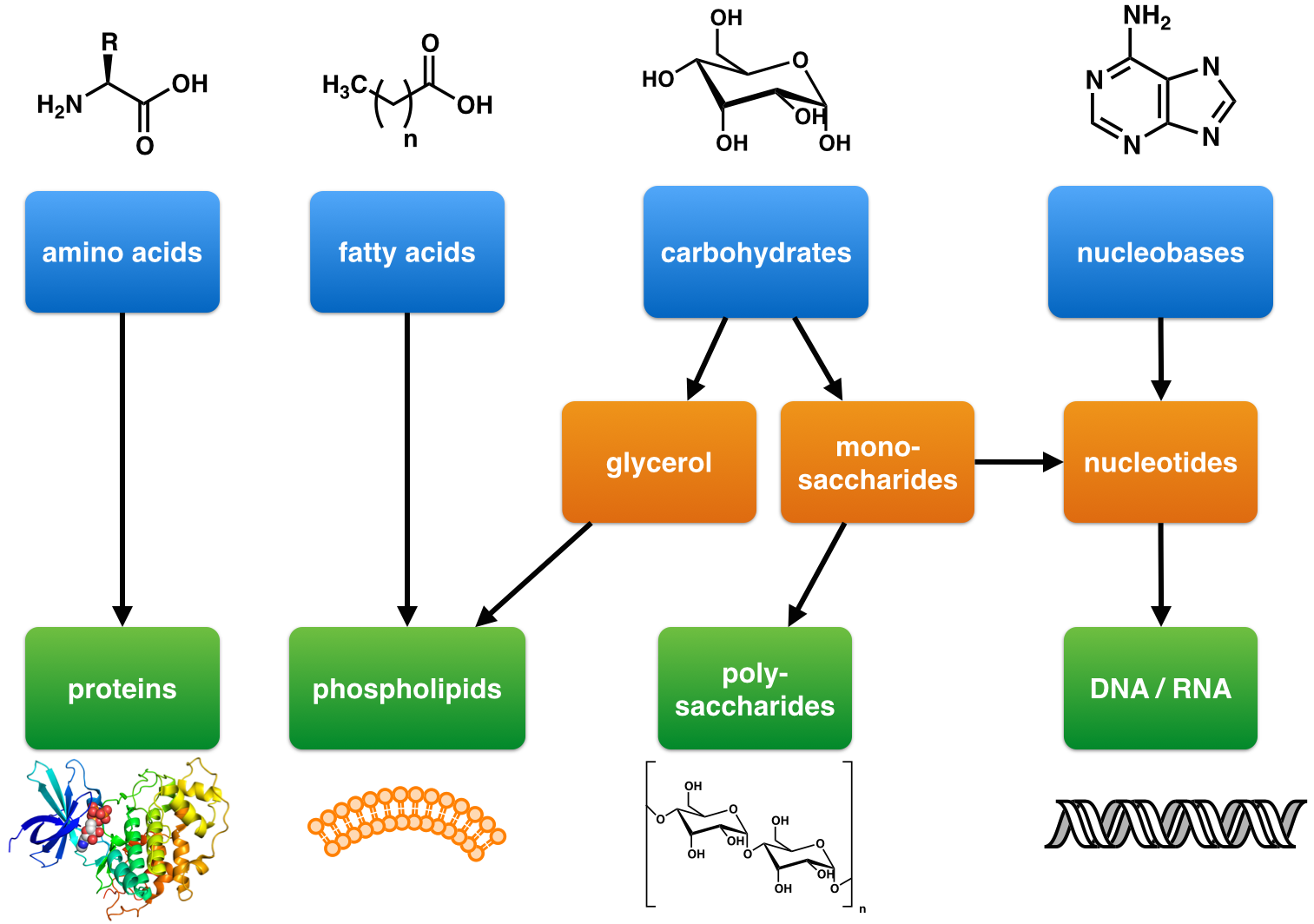|
Toxins
A toxin is a naturally occurring poison produced by metabolic activities of living cells or organisms. They occur especially as proteins, often conjugated. The term was first used by organic chemist Ludwig Brieger (1849–1919), derived from '' toxic''. Toxins can be small molecules, peptides, or proteins that are capable of causing disease on contact with or absorption by body tissues interacting with biological macromolecules such as enzymes or cellular receptors. They vary greatly in their toxicity, ranging from usually minor (such as a bee sting) to potentially fatal even at extremely low doses (such as botulinum toxin). Terminology Toxins are often distinguished from other chemical agents strictly based on their biological origin. Less strict understandings embrace naturally occurring inorganic toxins, such as arsenic. Other understandings embrace synthetic analogs of naturally occurring organic poisons as toxins, and may or may not embrace naturally occurr ... [...More Info...] [...Related Items...] OR: [Wikipedia] [Google] [Baidu] |
Venom
Venom or zootoxin is a type of toxin produced by an animal that is actively delivered through a wound by means of a bite, sting, or similar action. The toxin is delivered through a specially evolved ''venom apparatus'', such as fangs or a stinger, in a process called ''envenomation''. Venom is often distinguished from ''poison'', which is a toxin that is passively delivered by being ingested, inhaled, or absorbed through the skin, and ''toxungen'', which is actively transferred to the external surface of another animal via a physical delivery mechanism. Venom has evolved in terrestrial and marine environments and in a wide variety of animals: both predators and prey, and both vertebrates and invertebrates. Venoms kill through the action of at least four major classes of toxin, namely necrosis, necrotoxins and cytotoxins, which kill cells; neurotoxins, which affect nervous systems; myotoxins, which damage muscles; and Hemotoxin, haemotoxins, which disrupt Thrombus, blood clotti ... [...More Info...] [...Related Items...] OR: [Wikipedia] [Google] [Baidu] |
Botulinum Toxin
Botulinum toxin, or botulinum neurotoxin (commonly called botox), is a neurotoxic protein produced by the bacterium ''Clostridium botulinum'' and related species. It prevents the release of the neurotransmitter acetylcholine from axon endings at the neuromuscular junction, thus causing flaccid paralysis. The toxin causes the disease botulism. The toxin is also used commercially for medical and cosmetic purposes. Botulinum toxin is an acetylcholine release inhibitor and a neuromuscular blocking agent. The seven main types of botulinum toxin are named types A to G (A, B, C1, C2, D, E, F and G). New types are occasionally found. Types A and B are capable of causing disease in humans, and are also used commercially and medically. Types C–G are less common; types E and F can cause disease in humans, while the other types cause disease in other animals. Botulinum toxins are among the most potent toxins known to science. Intoxication can occur naturally as a result of eithe ... [...More Info...] [...Related Items...] OR: [Wikipedia] [Google] [Baidu] |
Arsenic
Arsenic is a chemical element; it has Symbol (chemistry), symbol As and atomic number 33. It is a metalloid and one of the pnictogens, and therefore shares many properties with its group 15 neighbors phosphorus and antimony. Arsenic is notoriously toxic. It occurs naturally in many minerals, usually in combination with sulfur and metals, but also as a pure elemental crystal. It has various Allotropes of arsenic, allotropes, but only the grey form, which has a metallic appearance, is important to industry. The primary use of arsenic is in alloys of lead (for example, in car batteries and ammunition). Arsenic is also a common n-type dopant in semiconductor electronic devices, and a component of the III–V compound semiconductor gallium arsenide. Arsenic and its compounds, especially the trioxide, are used in the production of pesticides, treated wood products, herbicides, and insecticides. These applications are declining with the increasing recognition of the persistent tox ... [...More Info...] [...Related Items...] OR: [Wikipedia] [Google] [Baidu] |
Ludwig Brieger
Ludwig Brieger (1849–1919, Glatze (now Klodzko, Poland)) was a German physician, pathologist, and chemist. Biography After graduating from the gymnasium in Glatz, he studied at the University of Breslau and University of Stratsburg, where he graduated with the D.M. degree in 1875. From 1879 to 1886 he worked at the Charité Clinic and became a professor in 1882. From 1891 to 1900 he was head of the department of the Institute for Infectious Diseases, where he collaborated with Robert Koch. From 1900 he worked as a professor of general internal medicine. He investigated metabolic and infectious diseases and explored the basic nature of bacterial toxins. In the early 1880s he conducted research on cadaveric poisons. In 1885 he was the first to isolate 1,5-diaminopentane (cadaverine). In 1890 he introduced the term toxin in his study of the toxins of Salmonella Typhimurium (the causative agent of typhoid fever Typhoid fever, also known simply as typhoid, is a dis ... [...More Info...] [...Related Items...] OR: [Wikipedia] [Google] [Baidu] |
Naturally Occurring
A natural product is a natural compound or substance produced by a living organism—that is, found in nature. In the broadest sense, natural products include any substance produced by life. Natural products can also be prepared by chemical synthesis (both semisynthesis and total synthesis and have played a central role in the development of the field of organic chemistry by providing challenging synthetic targets). The term ''natural product'' has also been extended for commercial purposes to refer to cosmetics, dietary supplements, and foods produced from natural sources without added artificial ingredients. Within the field of organic chemistry, the definition of natural products is usually restricted to organic compounds isolated from natural sources that are produced by the pathways of primary or secondary metabolism. Within the field of medicinal chemistry, the definition is often further restricted to secondary metabolites. Secondary metabolites (or specialized met ... [...More Info...] [...Related Items...] OR: [Wikipedia] [Google] [Baidu] |
Toxicant
A toxicant is any toxic substance, whether artificial or naturally occurring. By contrast, a toxin is a poison produced naturally by an organism (e.g. plant, animal, insect, bacterium). The different types of toxicants can be found in the air, soil, water, or food. Occurrence Toxicants can be found in the air, soil, water, or food. Humans can be exposed to environmental toxicants. Fish can contain environmental toxicants. Tobacco smoke contains toxicants. E-cigarette aerosol also contains toxicants. The emissions of a heat-not-burn tobacco product contains toxicants. Most heavy metals are toxicants. Diesel exhaust contains toxicants. Pesticides, benzene, and asbestos-like fibers such as carbon nanotubes are toxicants. Possible developmental toxicants include phthalates, phenols, sunscreens, pesticides, halogenated flame retardants, perfluoroalkyl coatings, nanoparticles, e-cigarettes, and dietary polyphenols. Related terms By contrast, a toxin is a poison produced natu ... [...More Info...] [...Related Items...] OR: [Wikipedia] [Google] [Baidu] |
Inhalation
Inhalation (or inspiration) happens when air or other gases enter the lungs. Inhalation of air Inhalation of air, as part of the cycle of breathing, is a vital process for all human life. The process is autonomic (though there are exceptions in some disease states) and does not need conscious control or effort. However, breathing can be consciously controlled or interrupted (within limits). Breathing allows oxygen (which humans and a lot of other species need for survival) to enter the lungs, from where it can be absorbed into the bloodstream. Other substances – accidental Examples of accidental inhalation includes inhalation of water (e.g. in drowning), smoke, food, vomitus and less common foreign substances (e.g. tooth fragments, coins, batteries, small toy parts, needles). Other substances – deliberate Recreational use Nitrous oxide ("laughing gas") has been used recreationally since 1899 for its ability to induce euphoria, hallucinogenic states and relaxa ... [...More Info...] [...Related Items...] OR: [Wikipedia] [Google] [Baidu] |
Poison
A poison is any chemical substance that is harmful or lethal to living organisms. The term is used in a wide range of scientific fields and industries, where it is often specifically defined. It may also be applied colloquially or figuratively, with a broad sense. Whether something is considered a poison or not may depend on the amount, the circumstances, and what living things are present. Poisoning could be accidental or deliberate, and if the cause can be identified there may be ways to neutralise the effects or minimise the symptoms. In biology, a poison is a chemical substance causing death, injury or harm to organisms or their parts. In medicine, poisons are a kind of toxin that are delivered passively, not actively. In industry the term may be negative, something to be removed to make a thing safe, or positive, an agent to limit unwanted pests. In ecological terms, poisons introduced into the environment can later cause unwanted effects elsewhere, or in other pa ... [...More Info...] [...Related Items...] OR: [Wikipedia] [Google] [Baidu] |
Semantics
Semantics is the study of linguistic Meaning (philosophy), meaning. It examines what meaning is, how words get their meaning, and how the meaning of a complex expression depends on its parts. Part of this process involves the distinction between sense and reference. Sense is given by the ideas and concepts associated with an expression while reference is the object to which an expression points. Semantics contrasts with syntax, which studies the rules that dictate how to create grammatically correct sentences, and pragmatics, which investigates how people use language in communication. Lexical semantics is the branch of semantics that studies word meaning. It examines whether words have one or several meanings and in what lexical relations they stand to one another. Phrasal semantics studies the meaning of sentences by exploring the phenomenon of compositionality or how new meanings can be created by arranging words. Formal semantics (natural language), Formal semantics relies o ... [...More Info...] [...Related Items...] OR: [Wikipedia] [Google] [Baidu] |
Xenobiotic
A xenobiotic is a chemical substance found within an organism that is not naturally produced or expected to be present within the organism. It can also cover substances that are present in much higher concentrations than are usual. Natural compounds can also become xenobiotics if they are taken up by another organism, such as the uptake of natural human hormones by fish found downstream of sewage treatment plant outfalls, or the chemical defenses produced by some organisms as protection against predators. The term "xenobiotic" is also used to refer to organs transplanted from one species to another. The term "xenobiotics", however, is very often used in the context of pollutants such as dioxins and polychlorinated biphenyls and their effect on the biota, because xenobiotics are understood as substances foreign to an entire biological system, i.e. artificial substances, which did not exist in nature before their synthesis by humans. The term xenobiotic is derived from the Gree ... [...More Info...] [...Related Items...] OR: [Wikipedia] [Google] [Baidu] |
Consumer Reports
Consumer Reports (CR), formerly Consumers Union (CU), is an American nonprofit consumer organization dedicated to independent product testing, investigative journalism, consumer-oriented research, public education, and consumer advocacy. Founded in 1936, CR was created to serve as a source of information that consumers could use to help assess the safety and performance of products. Since that time, CR has continued its testing and analysis of products and services, and attempted to advocate for the consumer in legislative and rule-making areas. Among the reforms in which CR played a role were the advent of Seat belt legislation, seat belt laws, exposure of the Health effects of tobacco, dangers of cigarettes, and more recently, the enhancement of consumer finance protection and the increase of consumer access to quality health care. The organization has also expanded its reach to a suite of digital platforms. Consumer Reports Advocacy frequently supports environmental causes, inc ... [...More Info...] [...Related Items...] OR: [Wikipedia] [Google] [Baidu] |




